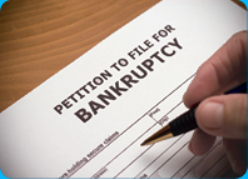 Chapter 7 bankruptcy is designed to discharge debt. However, sometimes debtors don’t want specific debts discharged. I’m not talking about a credit card or money owed to a favorite doctor. I’m referring to secured debt like car loans and mortgages and leases for an apartment or a house. In Chapter 7 you can discharge secured debt, completely eliminating personal liability, but if you want to keep living in your apartment or driving your car then you probably don’t want to discharge liability for the loans secured by the property or the leases.
Chapter 7 bankruptcy is designed to discharge debt. However, sometimes debtors don’t want specific debts discharged. I’m not talking about a credit card or money owed to a favorite doctor. I’m referring to secured debt like car loans and mortgages and leases for an apartment or a house. In Chapter 7 you can discharge secured debt, completely eliminating personal liability, but if you want to keep living in your apartment or driving your car then you probably don’t want to discharge liability for the loans secured by the property or the leases.
Wiping out the loan secured by a car seems like a great idea. Most of us would be more financially comfortable not paying our $500 car payment each month. Unfortunately, discharging personal liability for the loan doesn’t take care of the lien attached to the vehicle. You may not have to pay that debt after finishing a Chapter 7 case but if you don’t then the lender is going to enforce the lien on the vehicle and repossess the car. The same thing goes for your apartment. If you stop making payments then you will be evicted.
If you intend to keep your car or continue living in your rented house then you need to reaffirm the car loan and assume the lease. Reaffirmation and lease assumption makes it so the debtor continues to be liable for the debt after the discharge. The procedure for reaffirmation and assumption is to give notice of your intent in a document called a Statement of Intent. This document is filed with the bankruptcy petition. However, the statement is not legally binding. Think of it as a document that simply lets your creditors know what you plan to do. Reaffirmation requires a separate agreement signed by both parties and filed with the court. If a debtor simply states in their Statement of Intent that they wish to reaffirm the debt, but never signs a reaffirmation agreement, then the debt will be discharged at the end of the case.